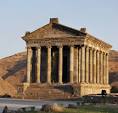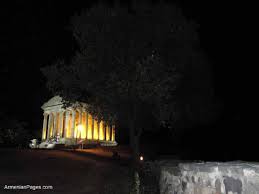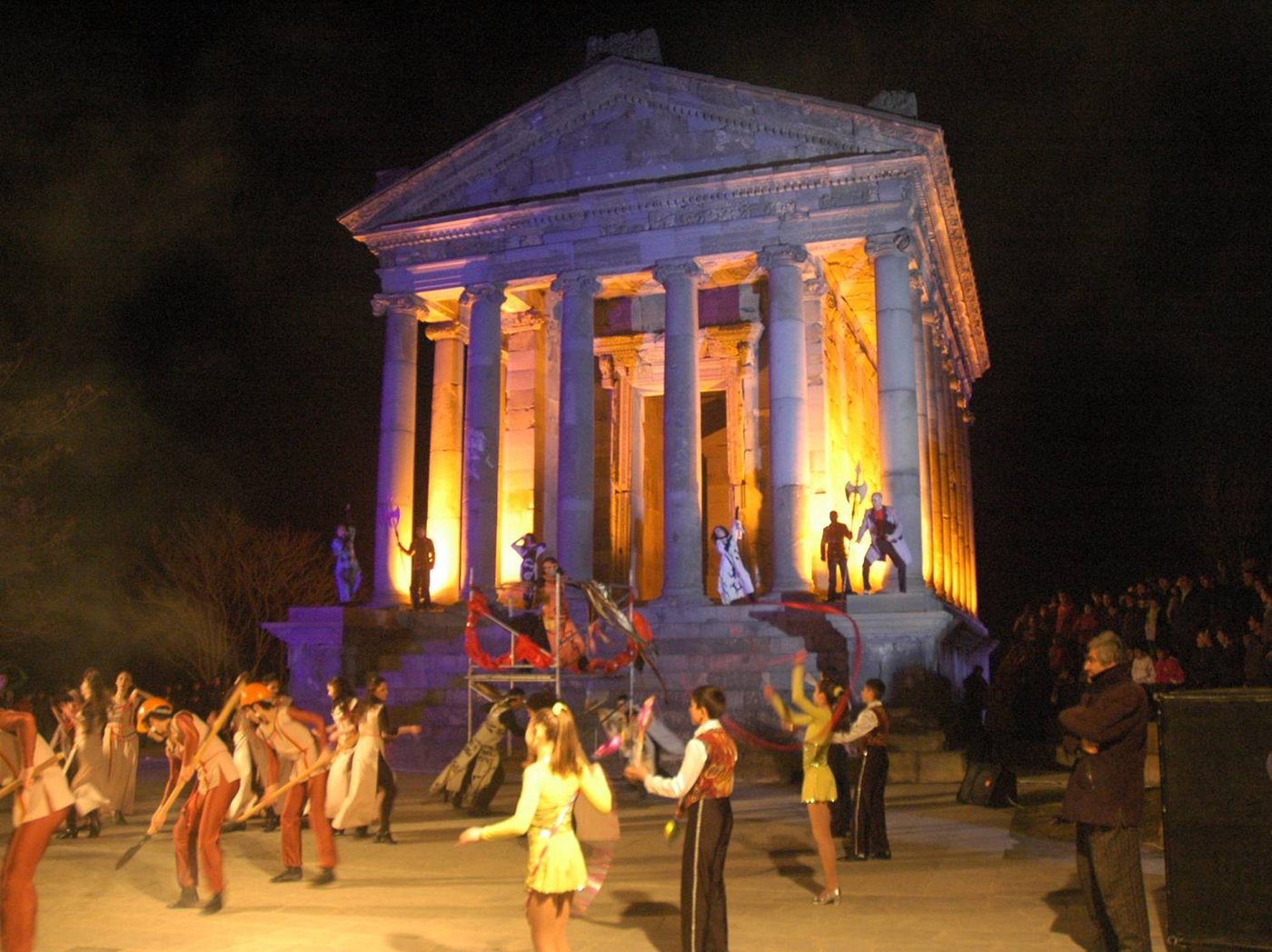The Temple of Garni is a reconstructed classical Hellenistic temple near Garni, Armenia. It is the only Greco-Roman colonnaded building in Armenia and the former Soviet Union.
It is the best-known structure and symbol of pre-Christian Armenia. It was probably built by king Tiridates I in the first century AD as a temple to the sun god Mihr. After Armenia's conversion to Christianity in the early fourth century, it was converted into a royal summer house of Khosrovidukht, the sister of Tiridates III. According to some scholars it was not a temple but a tomb and thus survived the universal destruction of pagan structures. It collapsed in a 1679 earthquake. Renewed interest in the 19th century led to its eventual reconstruction between 1969 and 1975. It is one of the main tourist attractions in Armenia and The temple is situated at the edge of a triangular cliff and is part of the fortress of Garni. One of the oldest fortresses in Armenia,it is mentioned as Gorneas in the first-century Annals of Tacitus. According to traditions, Movses Khorenatsi attributes the foundation of Garni Temple to Hayk forefather's grandson, Gegham. The temple is named after his grandson, Garnik. The temple was built,approximately, in the 2nd century, BC. The site is located near the village of Garni, in Armenia's Kotayk Province and is officially known as the Garni Historical and Cultural Museum Reserve, which includes the temple, a bath complex, a royal summer palace, the seventh century church of St. Sion and several other minor structures, including medieval khachkars. In total, the list of intangible historical and cultural monuments approved by the government of Armenia includes 11 items. It occupies 3.5 hectares and is supervised by the Service for the Protection of Historical Environment and Cultural Museum Reservations, an agency attached to the Ministry of Culture of the Republic of Armenia the central shrine of Armenian neopaganism.












